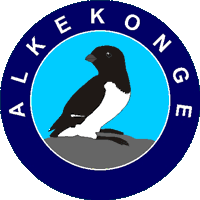PROJECT OVERVIEWThe main objective of the project is to estimate the impact of climate warming on Arctic zooplankton communities (Calanus), little auks (Alle alle) and their physical environment. We will study the interactions between water masses, marine and terrestrial ecosystems by using direct and innovative remote sensing methods. Our goal is to obtain data on water circulation, heat and salt transport by the West Spitsbergen Current, fjords hydrology and fjords - deep sea exchanges, optical parameters concerning the phyto- and zooplankton living conditions, plankton communities and local Little auk population parameters, breeding and feeding ecology and behaviour. Investigations will be carried out in three Spitsbergen fjords representing different climatic regimes and biota: south-west Spitsbergen (Hornsund) influenced by Arctic Sorkapp Current and Atlantic West Spitsbergen Current with large local Little auk breeding population; middle part of west Spitsbergen (Isfjorden, Kongsfjorden) with predominating influence of Atlantic water masses and with small scattered Little auk colonies; NW Spitsbergen (Magdalenefjorden), where large local Little auk breeding population is maintained, presumably due to short distance to favorable cold polar waters with abundant Arctic zooplankton. Climate changes in the Arctic will influence ocean circulation and the hydrologic regime, which will consequently lead to a restructuring of zooplankton communities between cold arctic waters, with a dominance of large zooplankton species, and Atlantic waters in which small species predominate. Little auks breeding in Spitsbergen, feed mainly on the large copepod Calanus glacialis, so tend to restrict their foraging activity to Arctic Water and avoid Atlantic Water, which contains mainly smaller copepod, Calanus finmarchicus. Parallel to the changes in zooplankton community structure we expect a change in vital population dynamical rates of little auks. In the areas where the little auks can reliably forage, the reproductive output, corrected for predation, should be higher than in colonies where little auks have to either fly far or utilize scattered patches of large zooplankton. Integrated efforts of Polish and Norwegian researchers involved in the proposal will lead to constructing integrated database for water masses, zooplankton and seabirds populations and creating different scenarios/models of Arctic ecosystem changes, on the basis of historical and new results obtained with innovative methods. Clear, natural system environment-zooplankton-seabirds seems to be a perfect tool for envisaging into future climate changes. Innovative investigation methods, biological, optical and acoustical, novel data analysis (multivariate statistical methods) and visualization tools (GIS) will help to integrate, analyze and visualize the data gathered with the aim to increase our knowledge on water mass circulation, ecology and biology of zooplankton and seabirds. OVERALL OBJECTIVEEstablishing different scenarios of Arctic ecosystem changes based on relationship between marine environment parameters, zooplankton, seabird and terrestrial communities
PURPOSEImprovement of knowledge on relationship between physical oceanography, bio-optical parameters, plankton communities and Little auk populations in the study area.RESULTS
|
 |
ALKEKONGE
Response of marine and terrestrial ecosystems to climate changes in Arctic
- links between physical environment, biodiversity of zooplankton and seabird populations. |
 PNRF - 234 - AI - 1/07 |